Lowlug Lego Truck Trial
.
August 5, 2006. At the end of 2004 a number of forum discussions started on 4x4 wheel drives on the Dutch Lego technic forum of www.lowlug.nl. As a result a Lego Truck Trial was proposed in februari 2005. A prologue was organized in Geldringen. The next trial event was organized at the last Lowlug-meeting on Januari 21, 2006 in Oss. Lots of pictures have been published on www.brickshelf.com. (search with "Gendringen" or "Oss")
Participants have to comply to a number of rules: the scale is set to 1:13, all wheels should be driven, suspension for all wheels, a maximum width of 24 studs, a maximum of 2 motors for power, no rc-motors, a real cabine and a fake motor with cylinders, a platform for loads of minimum size 24 x 30 studs. Options for the wheels are: 24x43 from the 8860, 81.6x34 ZR from the 8880 or the 68.8 x 24 S from the 5571.
 I decided
to participate in Oss and , although I don't have the required wheels. I learned
from my experiences in Oss
, and tried to come up with a number of improvements for the next trial that
was organizied during the lowlug meeting in Amsterdam in juni 2006. (search
with "Adam" or "Amsterdam" on Brickshelf for lots of pictures).
I decided
to participate in Oss and , although I don't have the required wheels. I learned
from my experiences in Oss
, and tried to come up with a number of improvements for the next trial that
was organizied during the lowlug meeting in Amsterdam in juni 2006. (search
with "Adam" or "Amsterdam" on Brickshelf for lots of pictures).
For the trial in Amsterdam, I decided to make a fresh new start with a completely new chassis and drive train. I wanted to build a Truck that could move its weight from right to left or left to right, to avoid a tilt over and to have more control on slipping wheels. Further , I wanted to have a hydraulic control on the distance of the chassis to the ground
.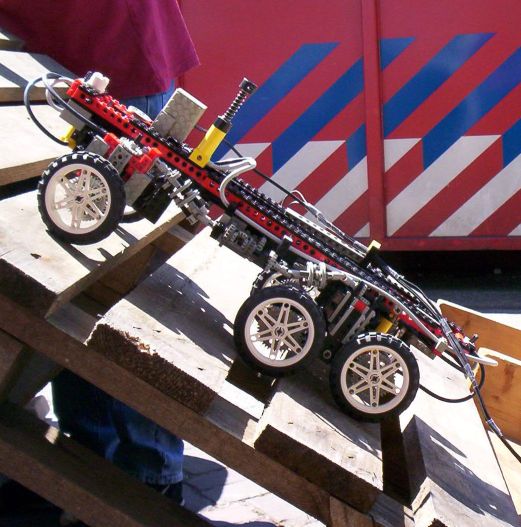
Unfortunately, I wasn't able to finish a comple truck in time. Nontheless, I was able to test the new concepts in this truck.The first picture shows that the truck could look normal when there is no pressure on the pneumatic cylinders.
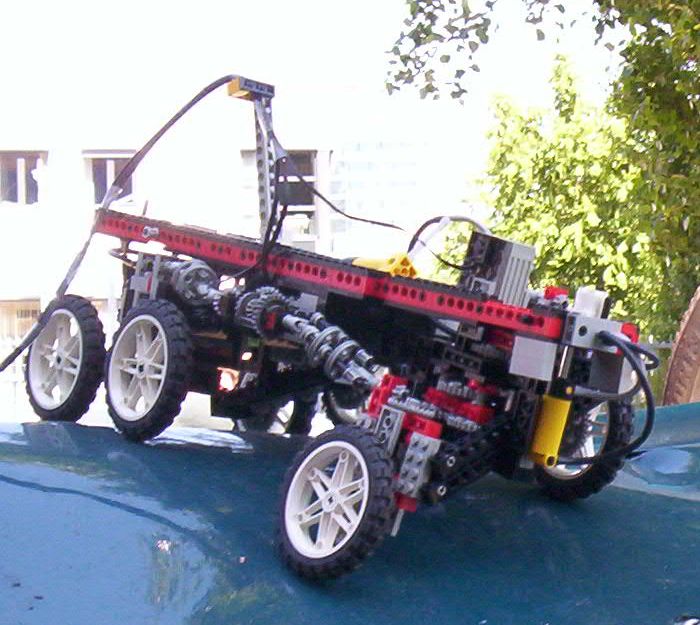
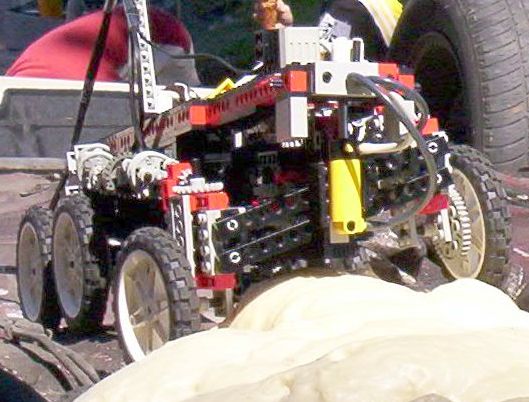
The pressure should be applied under extreme circumstances like in a trial. Unlike my previous designs with a central axis , this truck works with two drive trains. The truck works with 4 motors: 1 motor for the left train (in the middle), 1 for the right drive train (in the middle), 1 for steering (front, on top) and 1 for tilting the truck (behind the rear wheels).
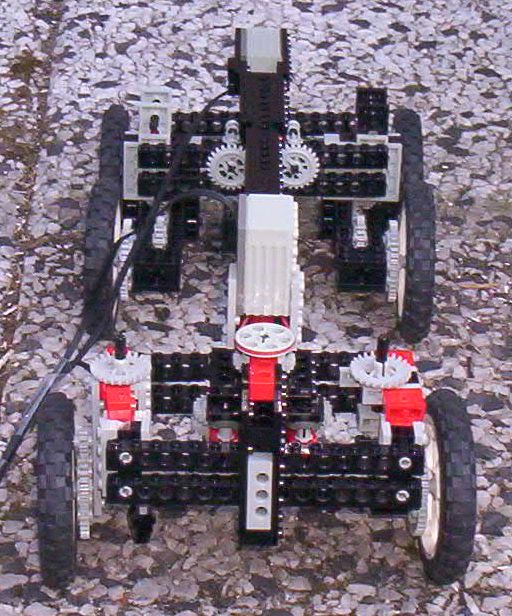
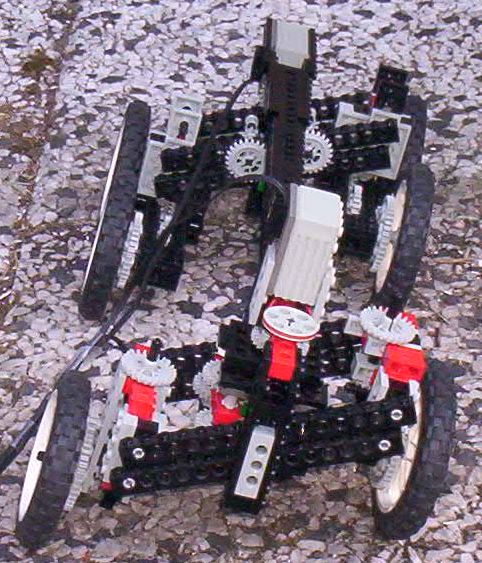
The rear wheels can not tilt freely, because the tilting angle between the wheels and the cahssis is controlled by a motor. The front wheels can tilt freely.
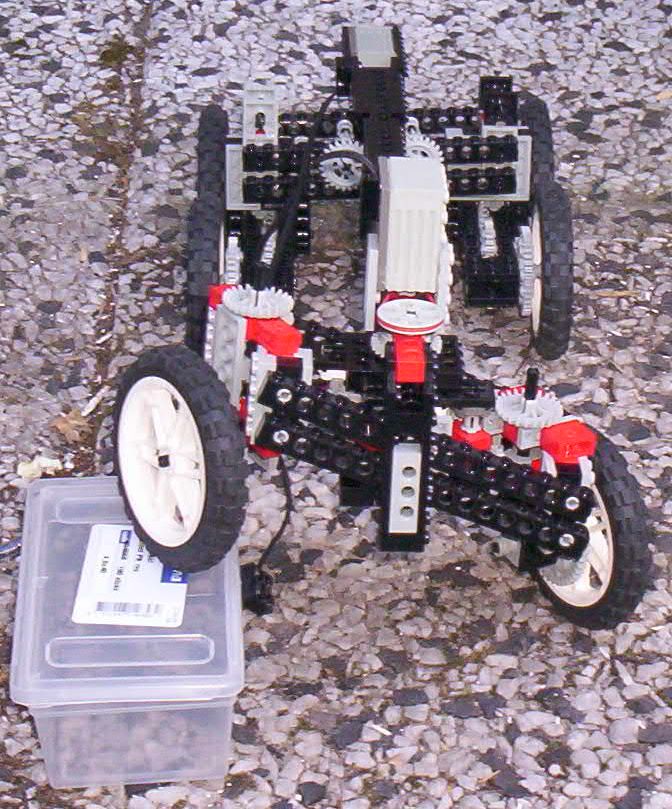
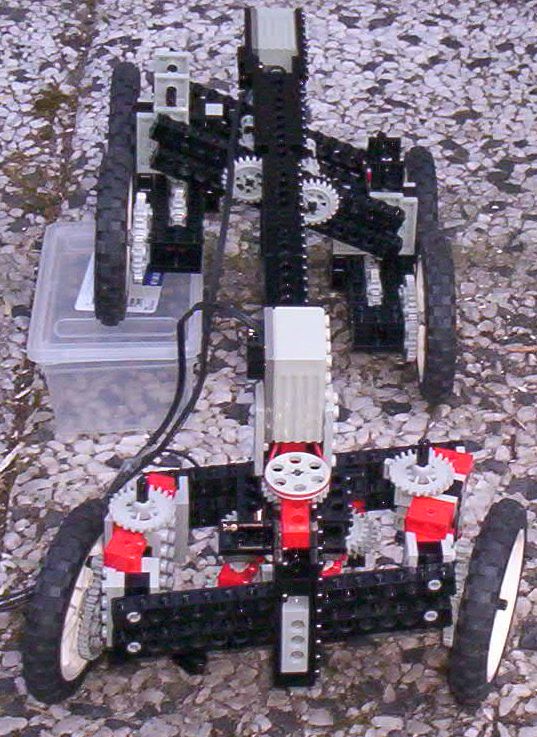
This construction allows for very extreme movements. However, there appeared to be also a very serious problem.
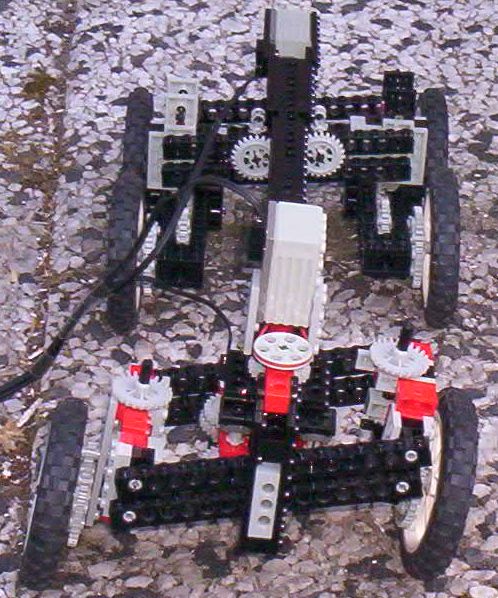
The front part of the truck tends to lean over to right or left. A solution might be to keep the tilting angle of the front wheels fixed to 90 degrees relative to their suspension. Another improvement might be to combine the hydrolics with springs.
